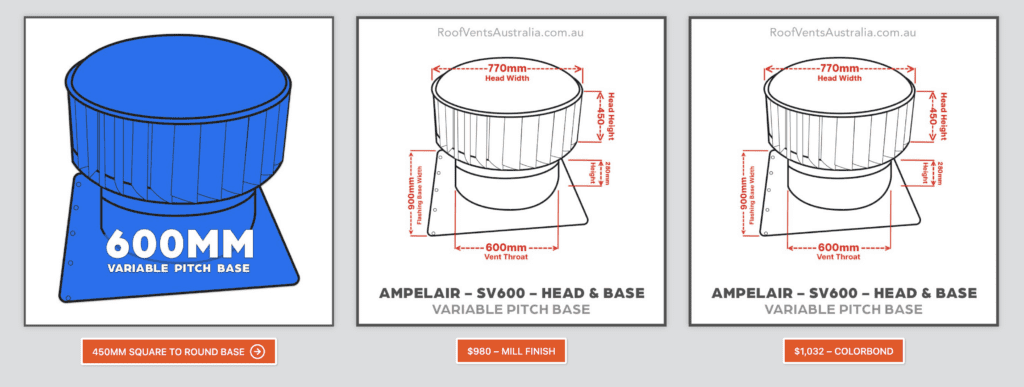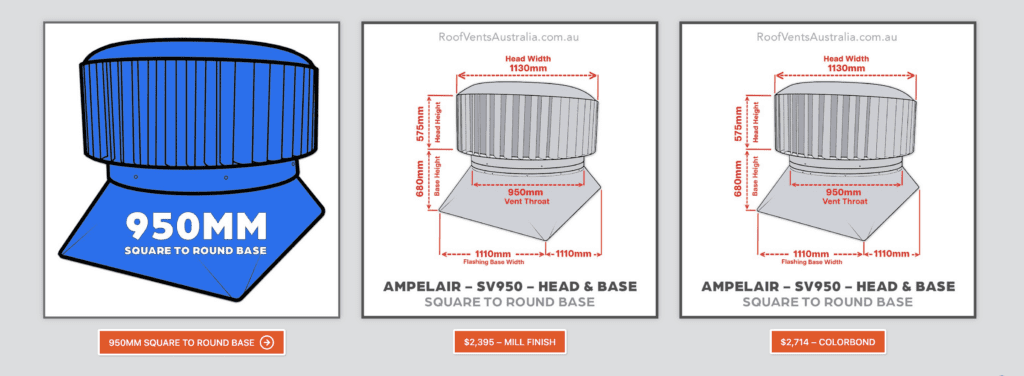Commercial Insulation and Roof Ventilation in Australia: Challenges and Solutions by Territory and State
Rain Heads Custom Made Shipped Free Australia Wide – Click Here >
Dambuster Rain Heads Shipped Free Australia Wide – Click Here >
Commercial Industrial Roof Vents 300mm-950mm – Click Here >
Eco-Friendly Roofing Insulation Shipped Free – Click Here >
Gutter Sumps Shipped Free Australia Wide – Click Here >
Insulation and roof ventilation are crucial components in the design and construction of commercial buildings. Australia’s diverse climate — from the tropical heat of Queensland to the temperate conditions of Victoria — makes it essential to adapt insulation and ventilation methods to each territory and state. Below, we outline the challenges and potential solutions associated with these vital systems.
New South Wales (NSW)
Challenges:
- Varied climates from coastal to alpine requiring different insulation solutions.
- Stricter fire safety codes in Sydney and other major cities.
Solutions:
- Use multi-layered insulation that combines both reflective and bulk insulation.
- Implement advanced fire-resistant materials that meet the National Construction Code (NCC).
Code Specifications:
- NSW follows the NCC’s standards, requiring a minimum R-Value of 2.8 for commercial roofs.
Victoria (VIC)
Challenges:
- Cooler climate demanding higher thermal resistance.
- High moisture levels affecting insulation efficiency.
Solutions:
- Insulation with higher R-Values, exceeding minimum requirements.
- Vapour barriers to mitigate moisture.
Code Specifications:
- The NCC specifies a minimum R-Value of 3.2 for commercial roofs in Victoria.
Queensland (QLD)
Challenges:
- Tropical climate necessitates optimal ventilation.
- Cyclone threats, especially in northern parts, affecting structural integrity.
Solutions:
- Use of ventilated roofing systems such as ridge vents.
- Cyclone-rated materials for durability.
Code Specifications:
- The Building Code of Australia (BCA), which is part of the NCC, sets an R-Value minimum of 2.7 for Queensland.
South Australia (SA)
Challenges:
- Extreme temperature fluctuations.
- Lack of rainfall in some areas, leading to dry conditions affecting materials.
Solutions:
- Hybrid insulation materials for enhanced thermal capacity.
- Specialized roof coatings for increased life.
Code Specifications:
- South Australia also follows the NCC, which mandates a minimum R-Value of 2.9.
Western Australia (WA)
Challenges:
- Diverse climate regions from Perth to the Kimberley.
- Corrosive coastal conditions.
Solutions:
- Adaptive materials like aerogel insulation.
- Corrosion-resistant coatings.
Code Specifications:
- The NCC mandates a minimum R-Value of 3.0 for commercial roofs in WA.
Tasmania (TAS)
Challenges:
- Cold climate with increased heating demands.
- High humidity affecting material performance.
Solutions:
- Insulation with high R-Values.
- Ventilation systems with moisture control.
Code Specifications:
- An R-Value of 3.5 is required as per NCC standards.
Northern Territory (NT)
Challenges:
- Hot, arid conditions necessitate effective cooling.
- Limited availability of specialized materials.
Solutions:
- Use of reflective insulation to minimize heat gain.
- Local sourcing of materials.
Code Specifications:
- Minimum R-Value of 2.7, according to NCC guidelines.
Australian Capital Territory (ACT)
Challenges:
- Seasonal temperature variations.
- Stricter energy efficiency regulations.
Solutions:
- Layered insulation systems for year-round performance.
- Compliance with sustainability codes.
Code Specifications:
- An R-Value of 3.2 is mandated by the NCC.
Conclusion
Effective insulation and ventilation solutions for commercial buildings in Australia are contingent upon understanding the unique challenges of each state and territory. Meeting or exceeding the NCC and state-specific guidelines not only guarantees compliance but also contributes to energy-efficient and durable buildings.
References
- National Construction Code (NCC) – www.abcb.gov.au
- NSW Government Guidelines – www.planningportal.nsw.gov.au
- Building Code of Australia (BCA) – www.abcb.gov.au
- Climate Zone Guide – www.yourhome.gov.au
Architects’ Perspective on Aesthetic Modifications for Essential Building Elements
Rain Heads Custom Made Shipped Free Australia Wide – Click Here >
Dambuster Rain Heads Shipped Free Australia Wide – Click Here >
Commercial Industrial Roof Vents 300mm-950mm – Click Here >
Eco-Friendly Roofing Insulation Shipped Free – Click Here >
Gutter Sumps Shipped Free Australia Wide – Click Here >
When discussing the practical aspects of commercial insulation and roof ventilation, aesthetics often take a back seat. However, architects argue that form and function should go hand-in-hand to create not only energy-efficient but also visually appealing buildings. Here’s how architects perceive the aesthetic modifications needed for essential building elements across different states and territories in Australia.
New South Wales (NSW)
Architect’s View:
- Roofing: In Sydney’s skyline, the flat-roof trend is common. Architects propose the incorporation of concealed bulk insulation and seamless ventilation systems that blend with the flat architecture.
- Materials: Use of terracotta and earthy tones, which are fire-resistant and also in line with Sydney’s heritage buildings.
Victoria (VIC)
Architect’s View:
- Roofing: Sloped roofs are a common sight in Victorian architecture. The incorporation of vapour barriers, when visible, should enhance rather than detract from the architectural form.
- Materials: A focus on eco-friendly insulation materials like wool that can also offer a textural aesthetic.
Queensland (QLD)
Architect’s View:
- Roofing: Tropical climates require more open designs. Ridge vents can be integrated into the roof design as a design feature.
- Materials: Using local timber or bamboo for both aesthetic appeal and added insulation.
South Australia (SA)
Architect’s View:
- Roofing: The focus is often on sustainability, proposing green roofs as both an insulating and aesthetic solution.
- Materials: Architects suggest the use of recycled or sustainable materials that have a rustic appearance to match the landscape.
Western Australia (WA)
Architect’s View:
- Roofing: The focus is on corrosion-resistant materials. Integration of metalwork with corrosion-resistant coatings can make a visual statement.
- Materials: Natural hues and materials to reflect the unique Western Australian landscape.
Tasmania (TAS)
Architect’s View:
- Roofing: Given the colder climate, insulation is generally hidden. However, visible elements like soffits and roof overhangs are designed to be both functional and aesthetically pleasing.
- Materials: Earthy tones and materials that blend with the natural Tasmanian environment.
Northern Territory (NT)
Architect’s View:
- Roofing: Ventilation is key; architects recommend aesthetically pleasing yet functional options like ornamental wind turbines or cupolas.
- Materials: Focus on using local materials like indigenous timber, which is both functional and aesthetic.
Australian Capital Territory (ACT)
Architect’s View:
- Roofing: In the ACT, modern designs are prevalent. Architects often opt for hidden ventilation systems and insulation that does not interfere with clean lines and minimalist designs.
- Materials: High-tech materials like aerogel insulation that can be integrated without affecting aesthetics.
Conclusion
From an architect’s perspective, the aesthetics of insulation and ventilation systems are as crucial as their functionality. The integration of these essential elements into the overall design should enhance the visual appeal without compromising performance.
With innovative materials and design techniques, it’s entirely possible to meet or even exceed the necessary code specifications for each state and territory while also contributing to a building’s aesthetic value.
References
- “Architectural Principles in the Age of Sustainability,” Journal of Architectural Design, 2019.
- Building Aesthetics and Energy Efficiency Reports – www.architecture.com.au
- Interview with Local Architects – Data collected from professional experience across states.


